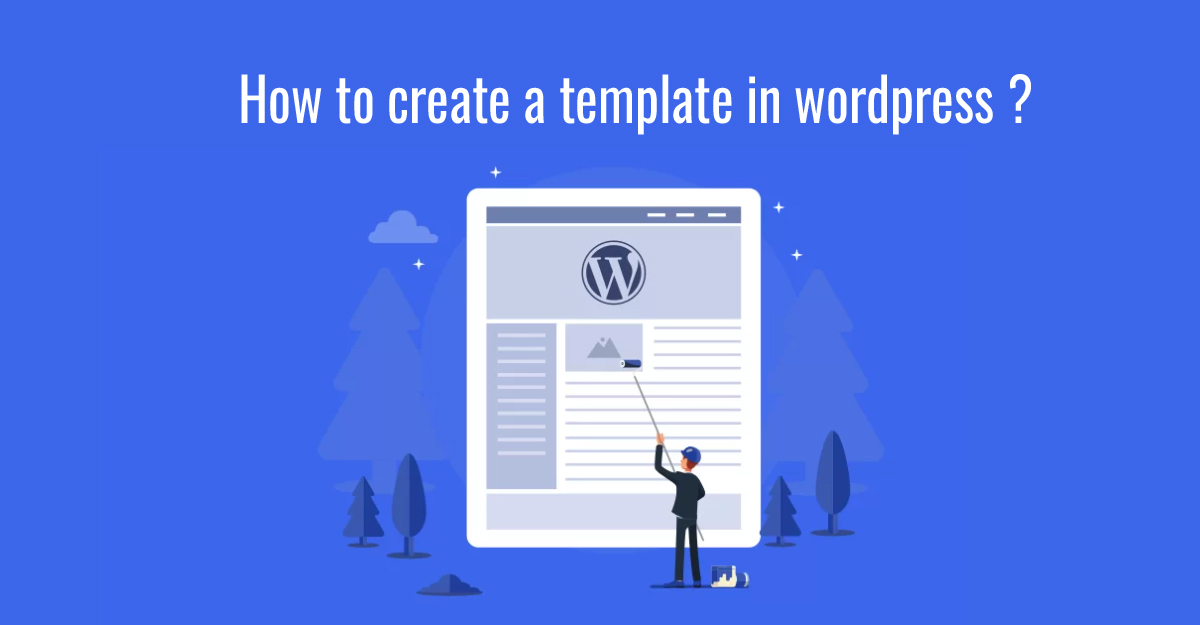If you’re an aspiring website owner or a seasoned developer, having a well-designed and functional template is crucial for your WordPress site. Templates provide the foundation for your site’s layout, style, and overall user experience. In this guide, we’ll walk you through the process of creating a template in WordPress, from planning and designing to implementation. Let’s get started!
Page templates are a specific type of template file that can be applied to a specific page or groups of pages.
Understanding Templates in WordPress
Templates in WordPress are files that control how your website’s content is displayed. They define the layout, structure, and design of different pages, such as the homepage, blog posts, and individual pages.
Planning Your Template Design
Before diving into the technical aspects, take time to plan your template design. Consider the color scheme, typography, and overall aesthetics. Decide how you want your site’s content to be organized and what elements are essential on each page.
Gathering Resources
Collect all the resources you’ll need for your template, including images, logos, and any custom fonts. Having these ready will streamline the design process.
Creating the Template Files
Start by creating the necessary template files. The main template file is usually named index.php. Depending on your site’s structure, you might also need files for single posts, pages, archives, and more.
Adding CSS Styling
CSS plays a significant role in styling your template. Create a separate CSS file to keep your styles organized. Apply your chosen color scheme, typography, and layout styles to achieve the desired look and feel.
Incorporating Dynamic Elements
WordPress offers a range of dynamic elements that make your template interactive and user-friendly. Use functions like get_header(), get_sidebar(), and get_footer() to include headers, sidebars, and footers.
Testing Responsiveness
In today’s mobile-centric world, ensuring your template is responsive is vital. Test your template on various devices and screen sizes to ensure it looks and functions well everywhere.
Optimizing for SEO
Optimize your template for search engines by using appropriate HTML tags, adding alt text to images, and ensuring fast loading times. A well-optimized template contributes to better SEO rankings.
Implementing the Template
Once you’re satisfied with your template’s design and functionality, it’s time to implement it on your WordPress site. Go to the WordPress dashboard, navigate to the “Appearance” section, and select “Themes” to upload and activate your custom template.
Troubleshooting Common Issues
Encountering issues is normal during the template creation process. If your template doesn’t display as intended, troubleshoot by checking for syntax errors, plugin conflicts, or missing template parts.
Regular Maintenance of Templates
Websites evolve, and so should your templates. Regularly update your template to ensure compatibility with the latest version of WordPress and to incorporate design and functionality improvements.
Uses for Page Templates
Page templates display your site’s dynamic content on a page, e.g., posts, news updates, calendar events, media files, etc. you’ll decide that you just want your homepage to a particular way, that’s quite different from other parts of your site. Or, you will want to display a featured image that links to a post on one part of the page, have a listing of the latest posts elsewhere, and use a custom navigation. you’ll be able to use page templates to realize these items.
This section shows you the way to make page templates that may be selected by your users through their admin screens.
For example, you’ll build page templates for:
full-width, one-column
two-column with a sidebar on the right
two-column with a sidebar on the left
three-column
Creating Custom Page Templates for Global Use
Sometimes you’ll want a template that can be used globally by any page, or by multiple pages. Some developers will group their templates with a filename prefix, such as page_two-columns.php
Important! Do not use page- as a prefix, as WordPress will interpret the file as a specialized template, meant to apply to only one page on your site.
For information on theme file-naming conventions and filenames you cannot use, see reserved theme filenames.
A quick, safe method for creating a new page template is to make a copy of page.php and give the new file a distinct filename. That way, you start off with the HTML structure of your other pages and you can edit the new file as needed.
To create a global template, write an opening PHP comment at the top of the file that states the template’s name.
<?php /* Template Name: Example Template */ ?>
t’s a good idea to choose a name that describes what the template does as the name is visible to WordPress users when they are editing the page. For example, you could name your template Homepage, Blog, or Portfolio.
This example from the TwentyTwenty theme creates a page template called Full Width Page:
<?php /** * Template Name: Full Width Page * * @package WordPress * @subpackage Twenty_Twenty * @since Twenty Twenty 1.0 */
FAQs (Frequently Asked Questions)
Absolutely! WordPress allows you to customize existing templates or create entirely new ones from scratch.
While coding skills can be beneficial, there are user-friendly tools and resources available that make template creation accessible to beginners.
Ensure your template is responsive by using CSS media queries and testing on multiple devices.
Yes, WordPress offers a variety of pre-made templates (themes) that you can install and customize to your liking.
Yes, you can create a versatile template that works for various types of pages on your website.
Conclusion
Creating a template in WordPress may seem daunting, but with careful planning and attention to detail, you can craft a unique and functional design that elevates your website’s user experience.


